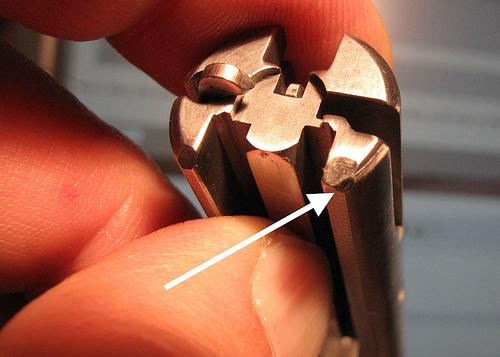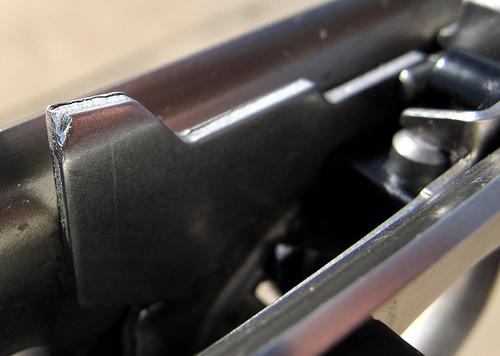After 30 years of combat shooting with Smith L-Frames, I'm switching to bulleye work with two Mark II era 22/45s.
My trigger work is really bad and shooters here say to dry fire. I can definitely see the benefits but am concerned how, maybe, 40 or 50 dry fires a week, will affect these gun(s). I've got pain in both hands that would make putting empty cases or snap caps into the chamber difficult. Local shooters say their investigations on the internet about dry firing these Rugers are inconclusive. Does anyone here know for sure, or know who I can ask to find out.
Other steps I'm going to have to take:
To provide some bulk to the thin grip on the 22/45's, I'm wrapping surgical tape over a sloppy, hand made leather grip sleeve and covering these with black electrical tape. I see that some here have gone to a guy in Ohio who instals grommets (?) in older Rugers. But, I'm not looking to fit the gun with grip panels. I'll need to use a larger bullseye grip system. Are there more choices I might look into to find the right grip system for bulls eye shooting?
My long bbl 22/45 is one of those guns whose bolt face near the extractor is dessicated. It wasn't that way when I bought it new in 2005. Two questions about this: I'm not sure, but I think this might be why the slide rarely locks after the last shot (I have 8 mags). Is it likely that I'm damaging the good VQ trigger job when the slide goes forward with no cartridge in the chamber after the last shot? Important stuff. It's a good trigger and I don't want to lose it. In practice, I manage to keep the gun loaded, but in matches I can only load and shoot 5 rounds at a time.
The second part of this is whether Ruger would be willing to do anything about this defect in the gun. It's probably a hundred dollar part - the whole bolt - so I doubt they'd stand by something that expensive. Does anyone have experience with this kind of damage to the front edge of the bolt near the extractor on their Mark .22s?
I really like bullseye shooting, but now that I have the time I don't have much money. A club range is less than 4 miles away and there's no daily fee, so I can go almost anytime and shoot a careful 30 rounds using the remainder of Fed Champion ammo I bought before Oh' came on the scene. I've got a little less than a case, but it should get me through about a year and a half of bulls eye work without worrying about ammo costs.
But I've got to solve some of these problems just to get to the mid level of shooters here. Any ideas based on your experiences are very welcome.
My trigger work is really bad and shooters here say to dry fire. I can definitely see the benefits but am concerned how, maybe, 40 or 50 dry fires a week, will affect these gun(s). I've got pain in both hands that would make putting empty cases or snap caps into the chamber difficult. Local shooters say their investigations on the internet about dry firing these Rugers are inconclusive. Does anyone here know for sure, or know who I can ask to find out.
Other steps I'm going to have to take:
To provide some bulk to the thin grip on the 22/45's, I'm wrapping surgical tape over a sloppy, hand made leather grip sleeve and covering these with black electrical tape. I see that some here have gone to a guy in Ohio who instals grommets (?) in older Rugers. But, I'm not looking to fit the gun with grip panels. I'll need to use a larger bullseye grip system. Are there more choices I might look into to find the right grip system for bulls eye shooting?
My long bbl 22/45 is one of those guns whose bolt face near the extractor is dessicated. It wasn't that way when I bought it new in 2005. Two questions about this: I'm not sure, but I think this might be why the slide rarely locks after the last shot (I have 8 mags). Is it likely that I'm damaging the good VQ trigger job when the slide goes forward with no cartridge in the chamber after the last shot? Important stuff. It's a good trigger and I don't want to lose it. In practice, I manage to keep the gun loaded, but in matches I can only load and shoot 5 rounds at a time.
The second part of this is whether Ruger would be willing to do anything about this defect in the gun. It's probably a hundred dollar part - the whole bolt - so I doubt they'd stand by something that expensive. Does anyone have experience with this kind of damage to the front edge of the bolt near the extractor on their Mark .22s?
I really like bullseye shooting, but now that I have the time I don't have much money. A club range is less than 4 miles away and there's no daily fee, so I can go almost anytime and shoot a careful 30 rounds using the remainder of Fed Champion ammo I bought before Oh' came on the scene. I've got a little less than a case, but it should get me through about a year and a half of bulls eye work without worrying about ammo costs.
But I've got to solve some of these problems just to get to the mid level of shooters here. Any ideas based on your experiences are very welcome.


